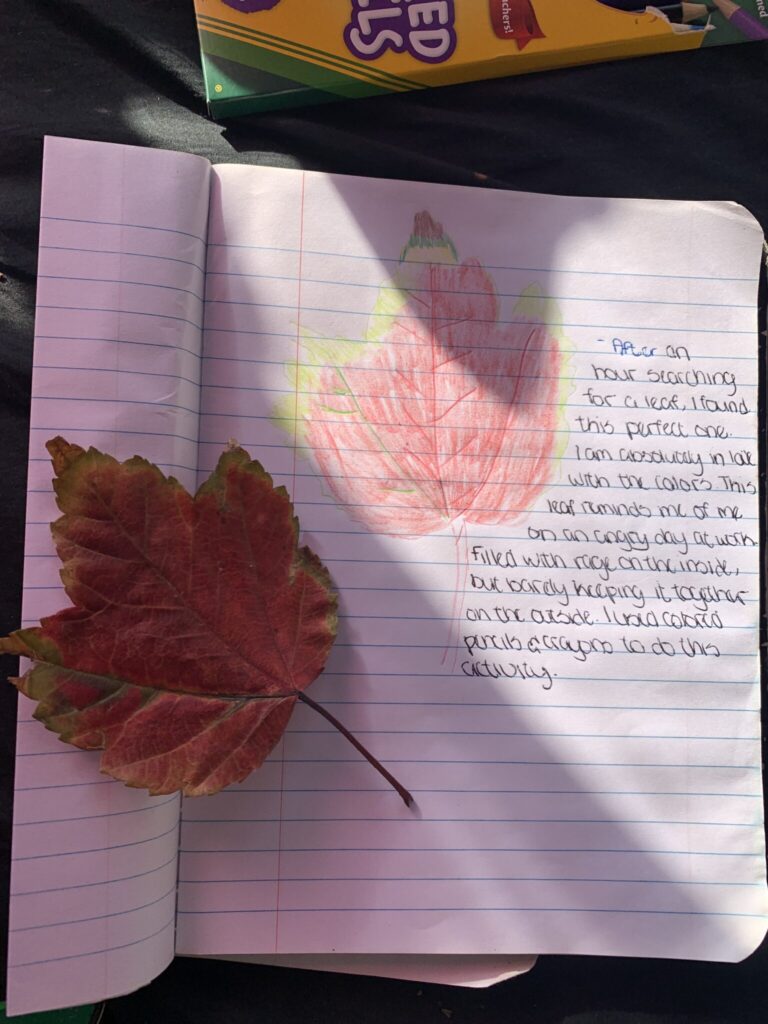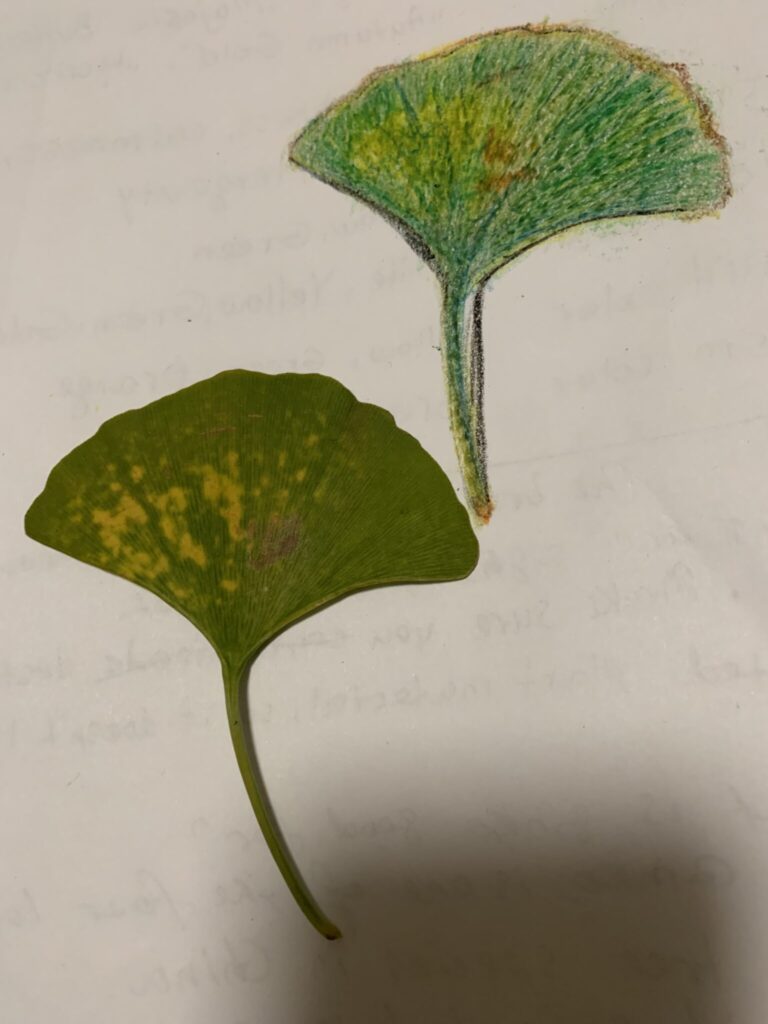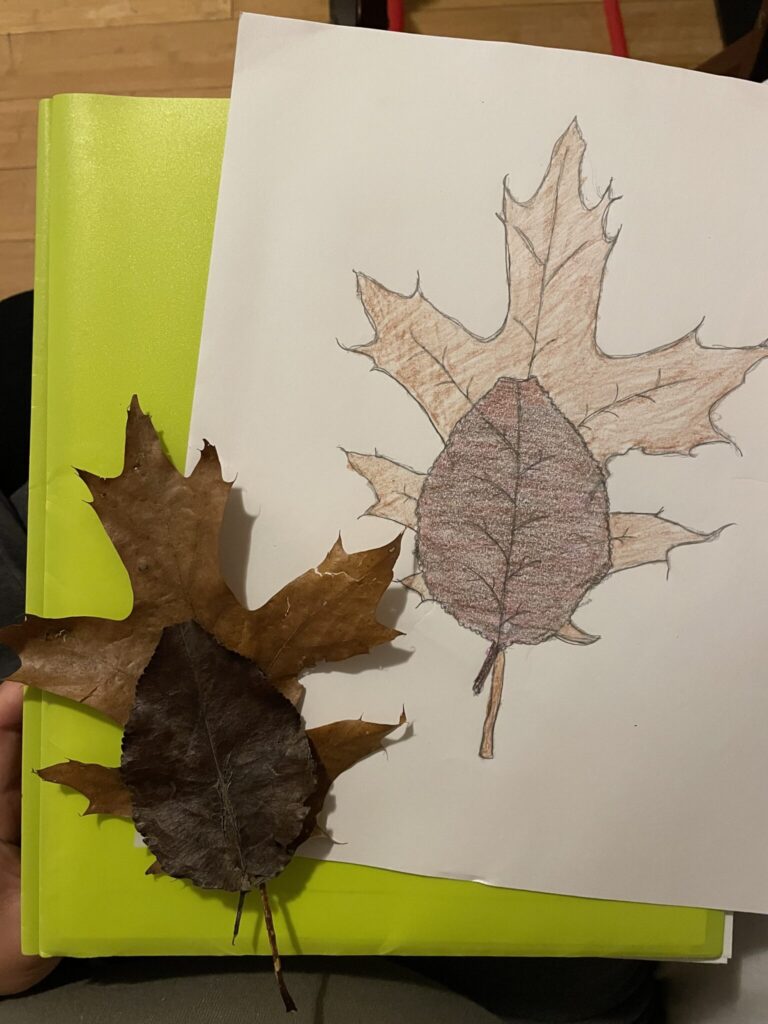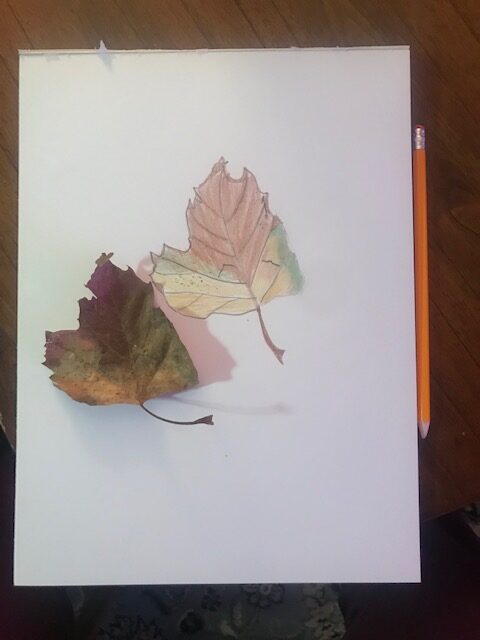



Describe your artistic process (why did you choose this leaf? what did you notice about it? why did you choose the materials that you used to create your art?)
I actually didn’t choose this leaf, the girl I babysat picked it up as we were walking home from school. I asked her if she could help me pick a nice one. She picked this one and I thought it was nice and small to put in my pocket. I noticed how small and green it was and how soft it felt. I chose color pencils because I could easily make the outline and color in the leaf and I think they look very similar!
the Leaf Study


My little sister choose the bigger leaf for me on our walk back to my house from the store and I picked the little leaf as a symbolization of me and her big sister and little sister. For me I noticed all the vines each leaf has and how hard it would of been to draw them, their different margins, the bigger leaf had smooth margins with multiple tips and the smaller leaf has little margins like m’s then I noticed the symbolization of me and my sisters relationship me as her older sister she picked the bigger leaf and her as my little sister I picked the smaller leaf. Neither of us realized until I did the assignment and she asked me how did it come out and I came to the realization. For this piece of art I used a pencil and crayons (white, brown, black, red violet)
This is a leaf ? I found in my backyard. I choose this leaf because of its color. I love the falls and I believe this leaf captured the seasonal colors. Brownish red, green, yellow and some orange. This leaf has it story written on it. It was my nice green and now in its season of withering away it has cracked pieces, patches of green blotches, lines that give it a creative look. Some white spots that tells the weather been tough out there. As this leaf wither away my favorite line I like to say is that” trees are the only thing that looks beautiful as it decomposes”. I can’t wait to do this project with the children.


For this seminar project, you are going to implement the creative art activity described in A Look At Project-Based Curriculum (slides 19-26). Read through the activity plan carefully.
Begin by exploring Two Yellow Leaves by Georgia O’Keeffe (Brooklyn Museum). Think about the questions:
Now look at the second painting by Georgie O’Keeffe, Green, Yellow and Orange and compare the two.
Take a nature walk in your neighborhood and find a leaf that you would like to turn into a work of art. Examine your leaf closely. If you have a magnifying glass available, use it. What do you notice?
Begin by drawing the leaf. Use either white or off-white construction paper. You can trace over the lines of your drawing with a sharpie marker. Finally, you can add color to your leaf. You may use watercolors or oil pastels.
When your artwork is complete, take a photograph and post it on Open Lab. Describe your artistic process (why did you choose this leaf? what did you notice about it? why did you choose the materials that you used to create your art?)